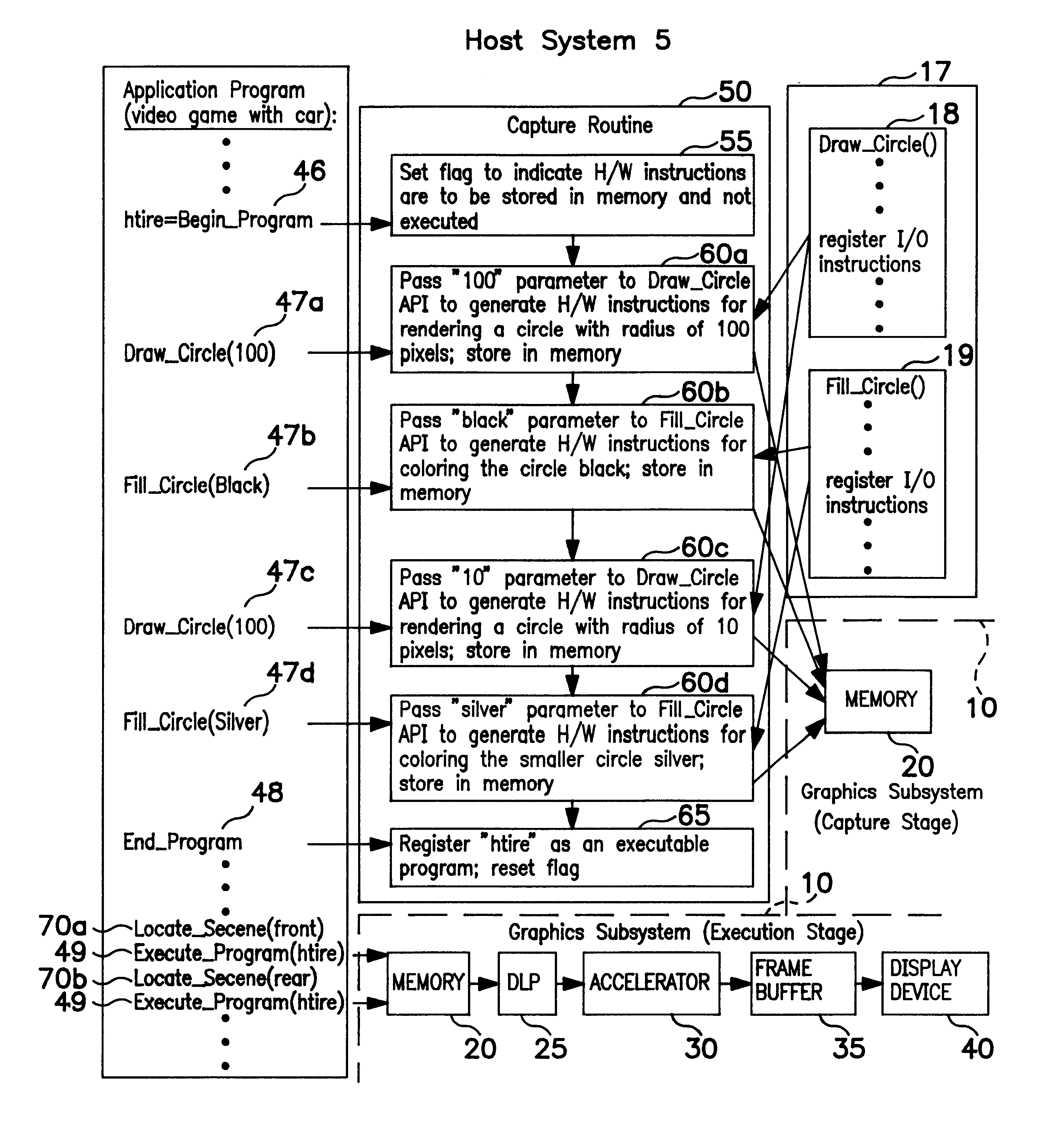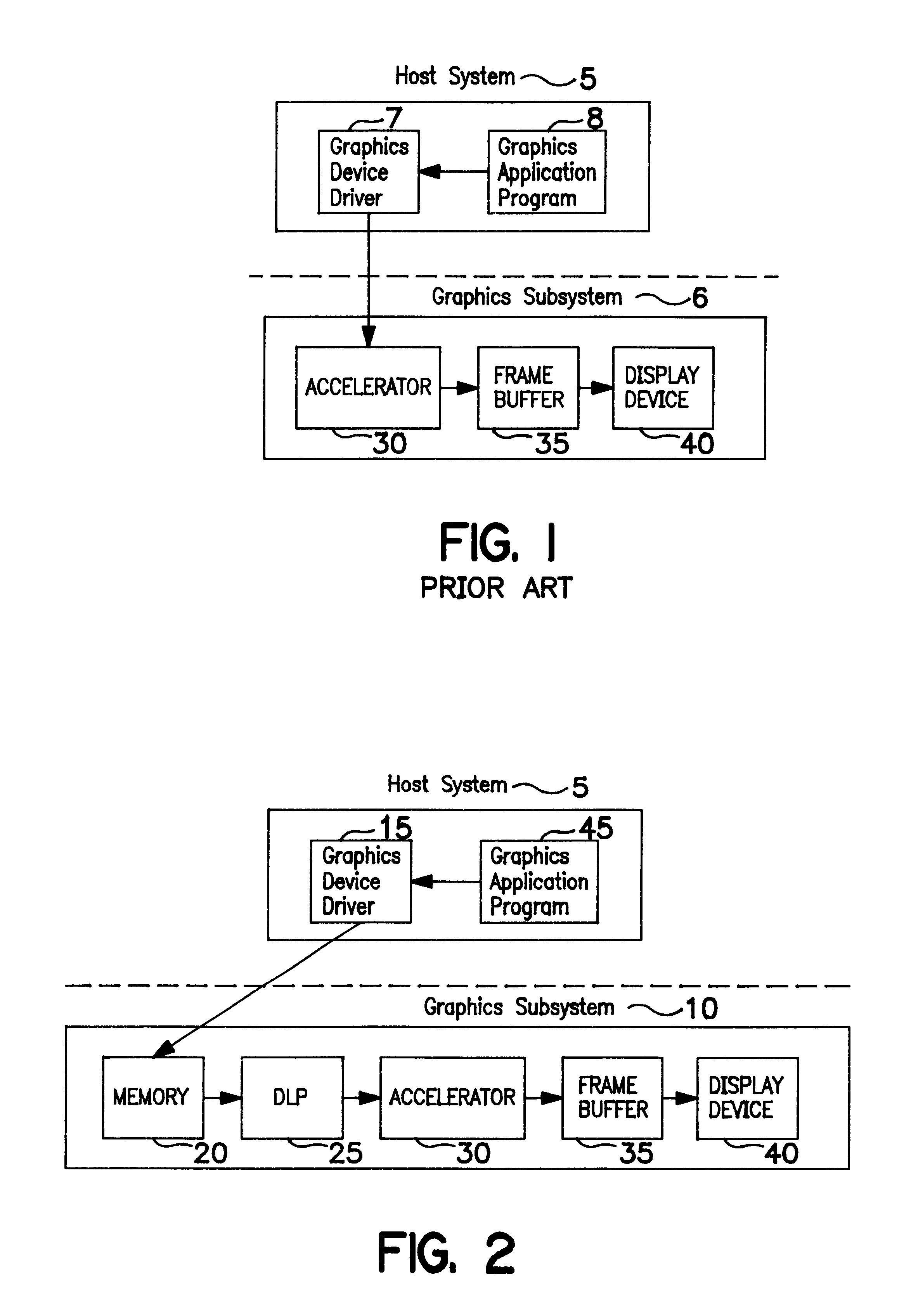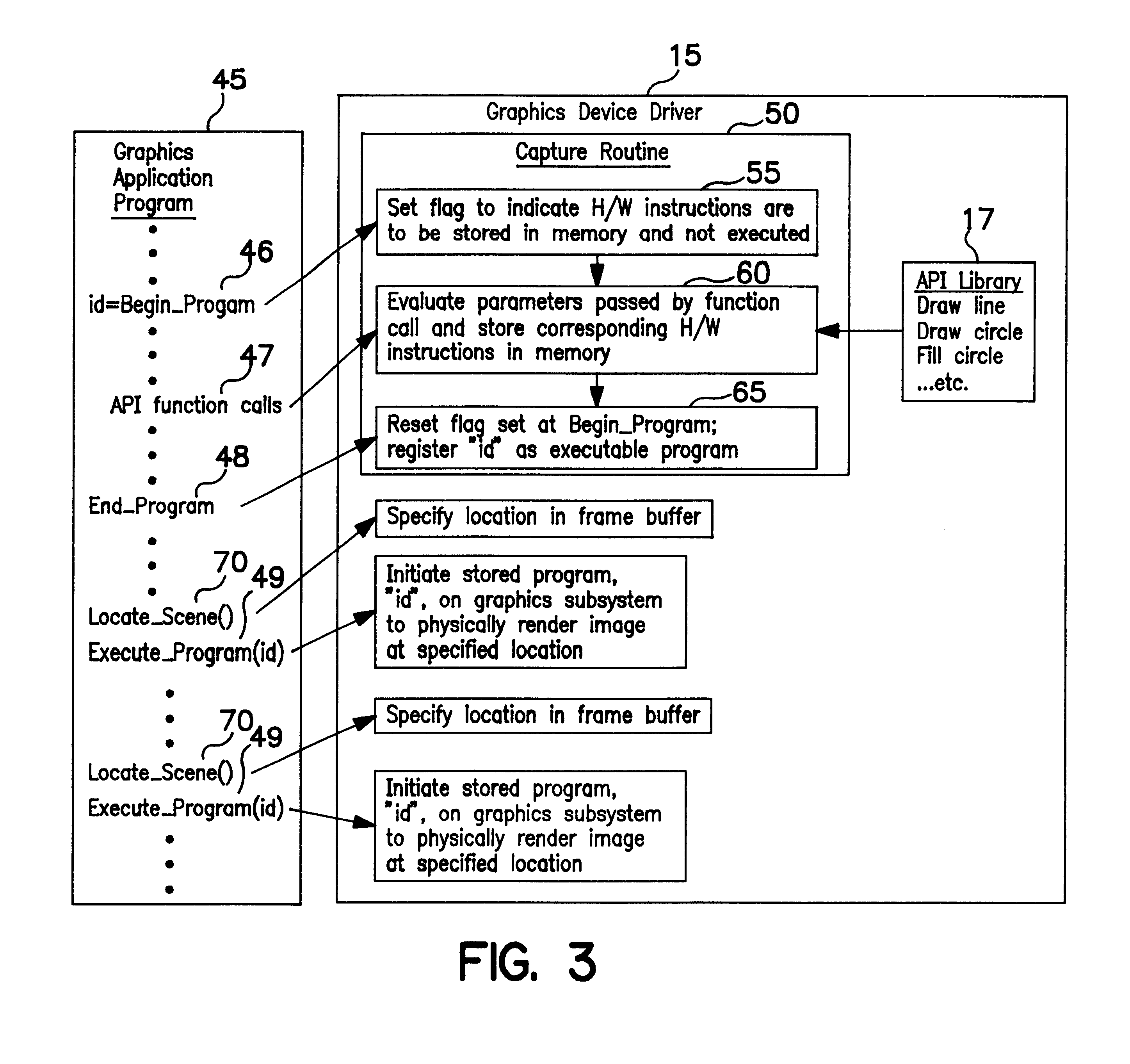Method and system for graphics rendering using captured graphics hardware instructions
a graphics hardware and instruction technology, applied in the field of computer graphics systems, can solve the problems of consuming significant portions of processor time and system memory, requiring complex, realistic images to be rendered in color, and requiring color rendering of complex images, etc., and achieve the effect of reducing the memory requirements of the system
- Summary
- Abstract
- Description
- Claims
- Application Information
AI Technical Summary
Benefits of technology
Problems solved by technology
Method used
Image
Examples
Embodiment Construction
[0017]FIG. 1 illustrates a conceptual overview of a prior art graphics rendering system. In the system shown in FIG. 1, a host operating system 5 has graphics device driver software 7, which, in response to high-level graphics rendering specifications in graphics application program 8, issues low-level instructions to graphics accelerator 30 in graphics subsystem 6. Under the control of the graphics device driver 7, accelerator 30 writes pixel definitions to frame buffer 35, which are scanned onto display device 40 to physically render an image.
[0018]By contrast, FIG. 2 shows basic software and hardware components in a method and system for graphics rendering according to the present invention. Elements include a graphics subsystem 10 comprising a random access memory 20, a custom graphics processor known as Display List Processor (DLP) 25, an accelerator 30, a frame buffer 25, and a display device 40, such as a CRT. The DLP 25 is capable of fetching hardware instructions stored in ...
PUM
 Login to View More
Login to View More Abstract
Description
Claims
Application Information
 Login to View More
Login to View More - R&D
- Intellectual Property
- Life Sciences
- Materials
- Tech Scout
- Unparalleled Data Quality
- Higher Quality Content
- 60% Fewer Hallucinations
Browse by: Latest US Patents, China's latest patents, Technical Efficacy Thesaurus, Application Domain, Technology Topic, Popular Technical Reports.
© 2025 PatSnap. All rights reserved.Legal|Privacy policy|Modern Slavery Act Transparency Statement|Sitemap|About US| Contact US: help@patsnap.com



